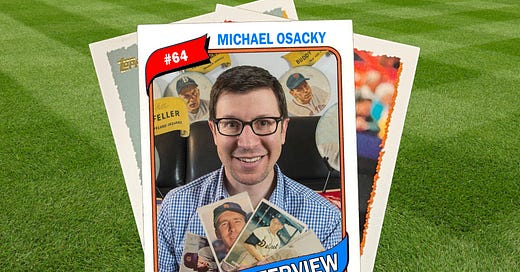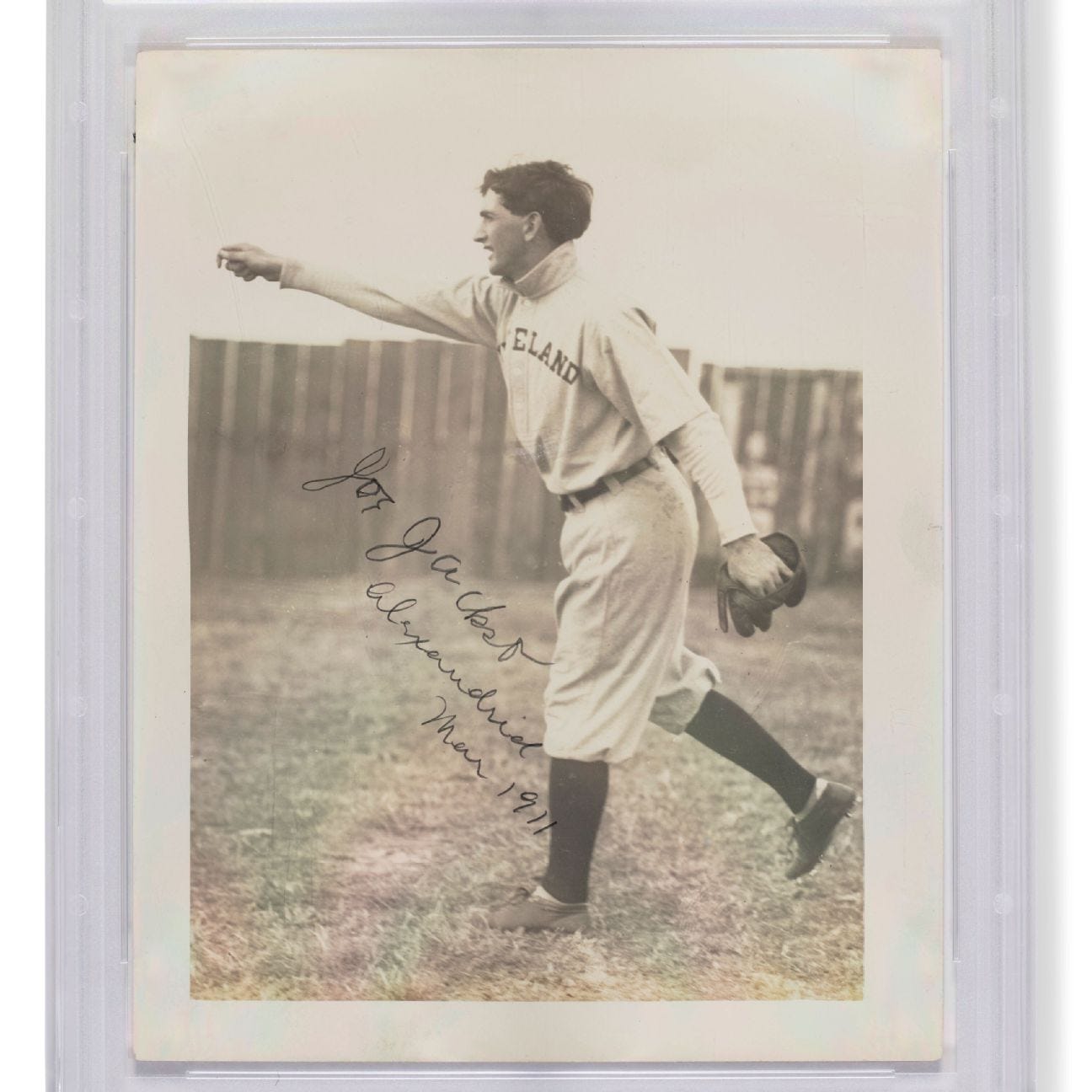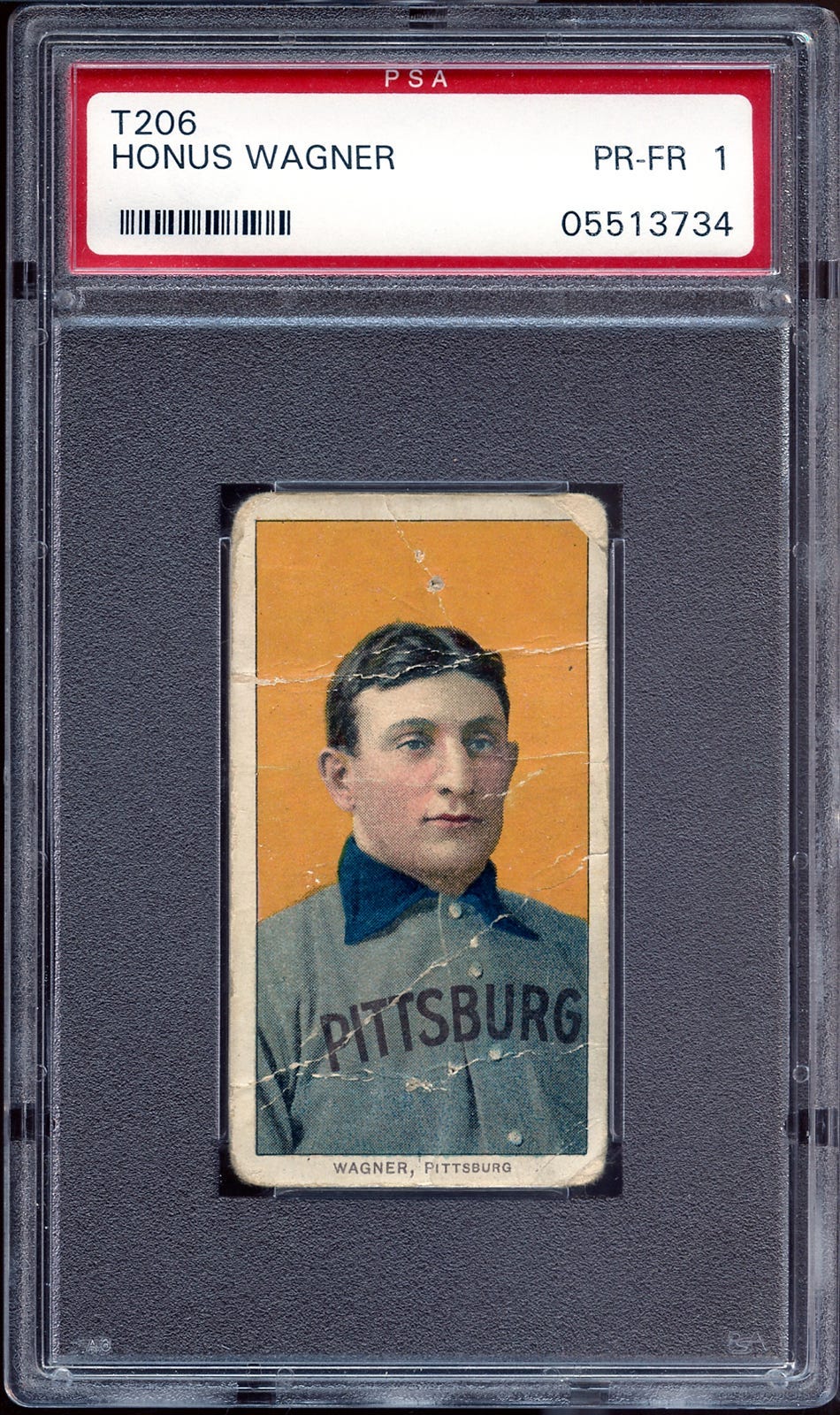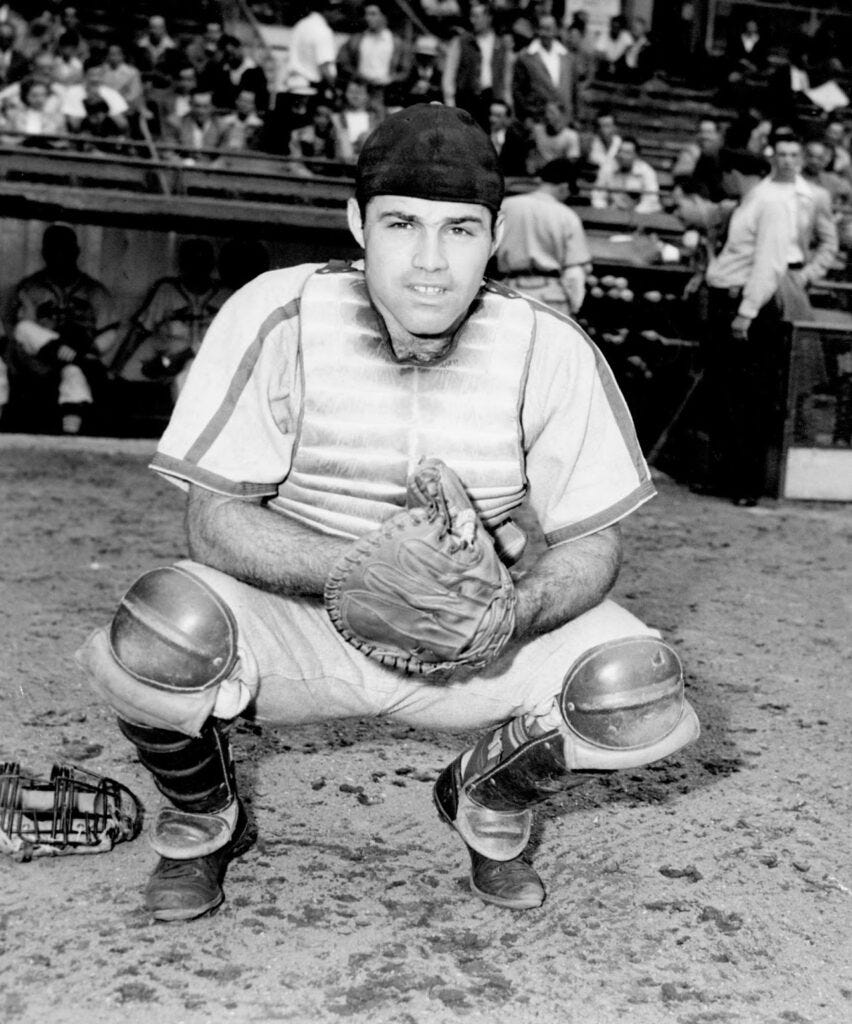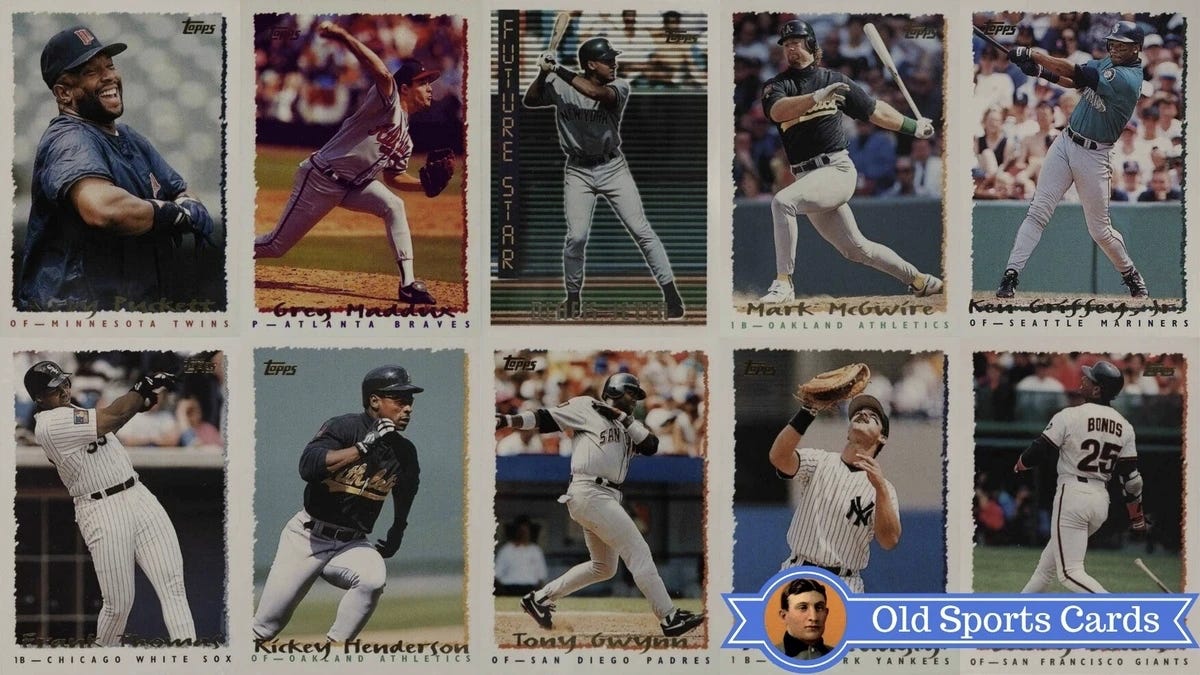Interview #64: All About Baseball Cards!
Michael Osacky, owner of Baseball in the Attic and lead appraiser at PSA, talks sports memorabilia
Michael Osacky is the lead appraiser for Professional Sports Authenticator (PSA) and president of Baseball in the Attic. PSA is the number one company in the industry for authenticating, grading, and appraising sports cards, memorabilia and more. He has been involved in “The Hobby”, as its referred to by collectors, since the mid-1990s and also become a go-to source for media outlets whenever a unique, rare or valuable piece of sports memorabilia reaches the news, including this story about the Ted Lasso “rookie” card that is now worth thousands of dollars.
He has lots of cool items in his personal collection as well, including Cracker Jack trading cards from 1914 and 1915 featuring several Hall of Famers that Mr. Burns wanted to recruit as ringers for his softball team. We talked about how he got into this profession, the evolution of the baseball card industry, and Joe Garagiola’s jock strap. You can check out Michael’s website here: www.baseballintheattic.com, where you can reach out for an appraisal. He is also found on Twitter: @BaseballAttic
Note: Some answers have been lightly edited for length and clarity. Interview was conducted on 6/11/25.
Getting Started
You were given a shoebox of baseball cards and it was all in motion from there?
When I was a teenager, I asked my grandfather for some old baseball cards for my birthday. He got me an old shoebox with some older cards. I loved it. They had the biographies on the back and stats, and I believe some of them had a couple of jokes. I thought it was interesting. They were much different from the current cards that I was collecting in the late 80s, early 90s, the Donrusses and the Fleers and the Topps and the Scores.
That was the junk wax era?
Correct. Those cards were not interesting to me because I wasn't the only person that had them. All my friends had the same ones. I wanted something different and so I realized that if I can get older cards that are not found at the local pharmacy or grocery store or card shop, that those might be more interesting to me, but maybe even more valuable as well.
Once or twice a week, I would ride my bicycle to the local pharmacy and buy all the new packs. But then, as I was alluding to, when I saw that everyone had them, I asked my grandfather, everyone has these, how about some older cards? Do you have any? And he actually did not, but he sourced them and found some old baseball cards and put ‘em in a shoebox for me.
Were you into the value and collectability back then?
I just thought that the older cards were interesting. It wasn't until I started going to local card shows on the weekends, which were held in hotels, I realized that you can have two of the same baseball cards, but the values are completely different. One could be worth $1 and one could be worth $10,000. Why is that? It's about condition, as the dealers told me: the corners, the centering, creases, staining, bubble gum, whatever it is, affects the condition. That was my aha moment. Oh my God, you can have literally two of the same things and the values are not the same at all.
When did you get involved professionally?
Mid-90s. Card grading just started in 1991. I didn't even know about card grading in the mid-90s. I would say the first 10 years of card grading was very small. People didn't even want to get their cards graded back then because it didn't make sense.
How did you get involved with PSA?
I have my own company, Baseball in the Attic. PSA is based in Southern California, they are the world's largest third-party grader of sports collectibles. I'm the lead appraiser at PSA. I oversee that department, which is strictly valuation. It's not rating, it's not authentication. I've had that role for 4.5 years now, through a couple different owners. But that conversation really got started, even though I've been with them officially 4.5 years, like 6.5 or 7 years ago.
It was a natural evolution because people would get their stuff back from grading and authentication and they would call the customer service phone number and say, Oh my God, this is awesome, we got Babe Ruth’s bat. How much is it worth? And the customer service person would say, we don't know. Then the owner in small town Ohio would say, huh? Just tell us what it's worth! So that's where they brought me in to help these clients after something has been graded or authenticated to assign a value.
And then you do speaking engagements too. What does that entail?
So usually two parts. The first part of my speaking engagement is I'll talk about whatever they want to talk about. It could be the history of baseball card collecting. It could be investing in sports memorabilia. The second part is always everyone that attends the lecture can bring in one item that they have and then I'll give them a free verbal appraisal on site. It could be a ‘92 Donruss Will Clark, it could be a signed Lou Gehrig baseball. People seem to like that, like the Antiques Roadshow type of thing.
What was it like in the early days? I remember companies were going out of business, there was just too many cards and none of them were valuable, and there was all these stories about the industry dying and then companies did fall off. It was oversaturated and maybe the whole thing would just collapse.
That's actually when I got started, around ’94, ’95. If you remember, a couple things happened in ‘94. One, the baseball strike. And the Chicago White Sox were really good and were supposed to win the World Series in ‘94. It never happened because of the strike. About that same time, people put their hands up and said, I'm done. Now there's 15 or 20 different card manufacturers making cards. We don't have enough money or time to collect 15 sets every year. Ten, fifteen years ago it was one set, it was Topps. That's all you needed. Yes, it was, let’s say, 752-card sets. But now you have 15 sets times 700 cards. It's too much. People said, I give up, we're done. This is greed. This is terrible.
And then you have the baseball strike. It's over. That was the junk wax era. Things started to change in the late 90s. It took several years for the card manufacturers to realize that, yeah, it was mass production, over-proliferation. Then Upper Deck came in in the late 90s and did some unique, especially with basketball, unique inserts, game-worn swatches, signed cards. And that kind of, I shouldn't say jump-started the hobby again, but there were some green shoots associated with that starting in 1997, 1998.
Quick Junk Wax Era summary
We discussed the so-called Junk Wax Era of sports trading cards. Anyone who collected baseball cards in the 80s and 90s will remember the over-saturation of the card market. A player from that time might have dozens of standard issue cards and a few special inserts made of them. Compare that to the 50s and 60s when there was just one set available. In 1960, Mickey Mantle had one main baseball card: 1960 Topps. In 1990, Will Clark had dozens of cards you could get at the store:
The card market crashed, companies went out of business or consolidated, and the industry shifted focus to new ideas, such as autographs, game-used relics and numbered inserts (example, a card could be called one-of-one, or 1/1, meaning only one like it was made, or 1/50, or 1/500, and thus much more scarce and valuable than the millions of base set cards from the past). Back to the interview…
The Modern Day Market and The Future
When did it turn into what it is today? Which is, to me, it's almost like watching the stock market. People are investing. People are bragging about their collections and showing them off, and paying thousands of dollars for cards. It feels intimidating and cutthroat sometimes.
It started eight or so years ago and really accelerated during the pandemic. Social media is prime for bragging or showing off. Then you have the addition of athletes or celebrities buying their own items, cards, memorabilia, and then showing them off to their millions, or tens of millions, of followers. I remember in the fall of 2020, at a press conference, a month or two earlier a LeBron James rookie exquisite card sold for a little over $4 million. He was asked at the press conference about that card. And that was the first time that someone in the media asked an athlete live at a presser about their own trading cards. And LeBron answered. He said “yes, I saw that price.” And he smiled and said, “but I also have a couple of them myself.” That was a big aha moment. No one cared about anything else after that. The press was like, what? LeBron James collects? He owns his own cards? What's going on here? And that same year, Justin Bieber was showing off his Pokémon cards on Instagram. Instagram definitely helped the hobby. But now it's very speculative, as you said, which is very dangerous.
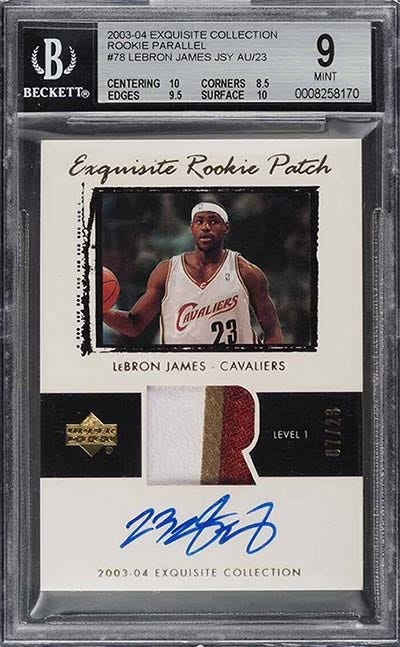
You have a guy that will score 45 points in a basketball game and everyone runs to eBay to buy those cards . And then the next week, maybe that player gets benched, or he's traded, or he sucks, or whatever it is. And then the values fall 75% overnight. There's a lot of speculation. It's not good.
We also have manufactured scarcity now. Where a few minutes ago we were talking about the junk wax era, the card manufacturers don't want to do that ever again because they're smart, at least I hope they are. What they're doing is called manufactured scarcity. You have the same card, let's say it's an Aaron Judge card. You make it a 1/1, the color is orange. Let's say it's a 1/5: red, 1/10: it's pink. It's the same card, it's just different scarcity levels, whereas back in the day it's true scarcity.


Oh yeah, the color variants. The first time I ever saw one of those I was like, oh this card's green. I didn't know what to do with it, so I threw it in the back of the binder. I like to collect the sets, I like looking through the cards, seeing all the photos, and reading the backs. Apparently that's not how you're supposed to collect? You're supposed to just look for the richest cards? What do you think about the manufactured scarcity? They just make one of them red and that's worth more?
First off, there's no right or wrong way to collect. People should collect however they want to collect. People will collect just the team set. They'll just collect a player, they'll collect the entire set, they'll collect different variations, they'll collect just outfielders, there's a million ways to collect. I always advise people when you collect, do it for enjoyment, not for an investment. If you do it for an investment, you're most likely going to get burned at some point in the future.
Now back to your question about my thoughts about manufactured scarcity. These are for-profit companies, so they have to make money. They employ thousands of people, so I get what they're trying to do. And to be honest, it's worked. It's caught on. The younger generation, people 30 and under, love this stuff. They are at card shows looking for these different types of scarcity levels. It also helps out, because maybe John Doe in Maryland cannot afford the 1/1 Mike Trout, but he can afford the 1/499 that looks the same as the 1/1. And that card is $100 and not $1,000,000.
What affects the value? Obviously, scarcity and condition. How do you come to a number?
Scarcity and condition is really important for the vast majority. The issue is a lot of the things that I have to appraise are 1/1 items that have never sold before, or will never sell. That can get tricky and I can't just pull out a number. There's four reasons why someone would call me in: insurance, donation, estate planning, or divorce. When it comes to the IRS, I have to fill out a form, Form 8283, that the client can submit to their CPA so that they can be getting a tax write off. I have to really be on my A-game because I can get a call from the IRS and they say so-and-so wants a tax deduction of X-amount of dollars, how did you come to that? Especially when it's a one-of-one item.
Yes, scarcity, of course. Condition. For example, a Shoeless Joe Jackson signed anything is very rare. He was illiterate, couldn't read or write. And there's only a handful, maybe like 10 or less, true authentic signatures of his. In that case, if that autograph is real, but it's in crappy condition, it's still worth a ton of money. Obviously, it's worth more if it's in better condition. But the condition there doesn't really matter; it's more about the scarcity than condition.
Where do you see the card and memorabilia industry heading in the next few years?
There's definitely gonna be changes. I think there's too many auction houses, so I think there's going to be some consolidation. I think what's really exciting is, we have private equity and venture capital coming to the hobby. PSA was acquired 4 years ago for $963million and now it's worth several billions of dollars. Steve Cohen, the owner of the New York Mets, acquired the company. And there's other people, there's other billionaires that are parking money into this market. They see it as an alternative asset class. It's not mature like the art market is. So that's exciting. I don't know what's gonna change, but I think it's all positive tailwinds that will benefit everybody.
So you think the private equity investment is ultimately a good thing for the industry? Do you think that might price out people with less money to collect?
I think there's always going to be lower-end cards for people to enjoy and collect and buy. The card manufacturers, if all they cater to is the high-end market, they'll be out of business in a year or two and no one's going to be interested. There's all different price points that people can collect. There's a lot more younger kids now interested in the market than there have been ever before. We have the national Sports Collectors Convention coming up at the end of next month in Chicago and last year was phenomenal record attendance. I would expect the same this year.
I'm not worried. Usually when private equity comes into a company or market, people are scared because there's layoffs and they are money hungry. This is different. This is not the case at all, what they're doing here is very different. This hobby grew by word of mouth, zero marketing, people collecting, people putting classified ads in print newspapers. That's how this hobby grew. So this hobby needed billions of dollars to inject into it, to really (oomph), push it up. It's all been a great win for everybody.
What's your favorite part of the job?
Every day is new. Different people, different collections, and, a lot of times, the people behind the collections are just as crazy as the collections. It's also tough because 99% of the people think that they have something that's worth $50million, $1billion, because they've had it for 30, 40, 50 years and they automatically think it must be worth a ton of money. That's not how this works.
We were just talking about the junk wax era. I have 100 cards from 1992 Donruss; Those cards are old, but they're worthless. Like 100 cards might be worth 1 penny total. Then when I tell them, they don't understand, or they think I'm lying. Like, let's say, a Babe Ruth baseball, a single signed Babe Ruth baseball, he signed for everybody, there's a lot of them out there, but it's still valuable. Maybe it's worth $10,000. And they go, no, it must be worth a million. It's Babe Ruth, he's the best. Again, it's supply and demand. The difficult part that I have to deal with every day is to explain to people why it's not worth $1,000,000 or why this is fake.
That's the difficult part, but the fun part is when you do find something extra rare and you get to be part of that history.
I've been fortunate. I've appraised a couple of the T206 Honus Wagners. There's only about 50 of them in the world, and that's the Holy Grail of baseball card collecting. To see those in person is quite incredible. And just to see unique collections and be able to help people out. It's very niche, what I do. I'm not a lawyer. I'm not a CPA. I'm not a dentist. I'm not a doctor. I'm really grateful that I'm able to help people out every day.
What's one of the most random things someone has asked you to appraise?
So that would be Joe Garagiola, he played on the Yankees, 60s, 70s, and then he was a radio announcer for the Yankees. This guy had Joe Garagiola's game-used jock strap. The guy looks at me and says yeah, I've never washed it, it smells a little funky, how much is it worth? And I said no, no, no, I'm done. I'm not going to go there.
You get to travel, too, for this job, right? What are some of the coolest places you’ve gotten to go with this job?
Hong Kong, Singapore. In this country, sometimes very rural, like New England, Vermont, New Hampshire, I'm flying to an airport that's super small. And I gotta drive like 2 or 2.5 hours to this small town. And it's this fantastic collection that's on a farm. That's pretty cool.
What are you a collector of? I did see you have a collection of old Cracker Jack cards?
Yeah, so Cracker Jack cards were manufactured for two years, 1914 and 1915, and they were inserted into packages of Cracker Jacks. The 1914 version is much more valuable because there was only one method of distribution, inside of the packs of Cracker Jacks. In 1915, there was a second method: you could put money in the mail and then Cracker Jacks would ship the cards back to you in the mail. So because there was 2 methods of distribution in 1915, the 1914 are much more valuable. It's a great set, it's littered with Hall of Famer's. The color of the cards, the red really pops. The paper stock is very thin, so they're very susceptible to condition issues. In the 1914 set, there's 144 cards. In 1915, there's 176 cards.
I thoroughly enjoyed my conversation with Michael. I remember collecting baseball cards and as a kid, you’d always want to get your favorite players. And also, you’d take as good of care of them as you could because that was your retirement nest egg. Except it turns out 99.9% of cards are worth pennies. While that was disappointing, I still enjoy opening packs of cards and seeing all the photos and designs. I used to ask my dad how much certain cards were worth when I saw a cool looking one, and since it was probably really worth less than a nickel, he would always just say, it’s whatever it’s worth to you. That’s why a shoebox of a hundred Will Clark cards has gone with me everywhere I’ve moved, it’s worth something to me.
I also think it’s important for people to heed his advice that collecting cards should be fun, and not an investment, especially a speculative one. It’s easy to see the news stories or social media posts of people buying and selling cards for tens of thousands of dollars that they acquired in a box of cards at Target, or Goodwill or an estate sale, when really it’s slightly more likely than winning the lottery.
And finally, this was the first time someone mentioned private equity and it actually made sense for them to be involved. No one’s losing their jobs from their investment and us non-billionaires can still buy regular packs of cards and enjoy them at what ever price point we are comfortable with. Michael also mentioned it as a developing market that still is a ways off from maturing, unlike the art world which is centuries old at this point.
My personal favorite Topps set was the 1995 version. They just looked cool, and were so 90s with the font and ragged borders. That Rickey Henderson one is sweet.

